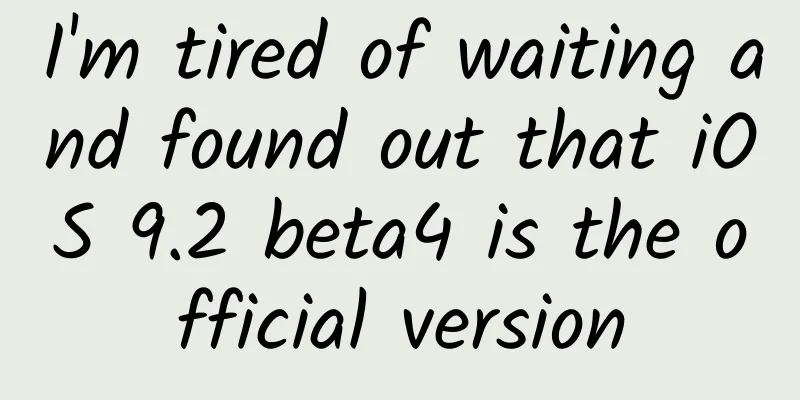What is "ammunition"? Let's take a look at the history of radioactive drugs

|
With the continuous development of medical diagnosis and treatment technology, Many new terms come into view. Such as "nuclear medicine", "nuclear medicine", "ammunition", "radioactive medicine" … Many patients may be confused: for surgery, one should go to the surgeon; for chronic diseases, one should go to the internal medicine department. So what does this " nuclear medicine department " do? " Nuclear medicine " and " ammunition " sound scary. If you use "radioactive medicine" yourself, will there be radiation? Will it cause damage to the body? Today’s article will answer your questions and help you understand the past and present of “ nuclear medicine ” and “ radioactive drugs ”. What is nuclear medicine? What are radiopharmaceuticals? /Nuclear Medicine/ The discipline of using radionuclides to diagnose, treat diseases and conduct medical research is the product of the combination of nuclear science and technology with medicine. /Radiopharmaceuticals/ Also known as radioactive drugs, they refer to special medicines containing radioactive nuclides used for clinical diagnosis or treatment, which are often referred to as "nuclear medicine" and "ammunition". Where do radiopharmaceuticals come from? Since “radioactive drugs” are radioactive, most people’s first reaction is “ dangerous ”. Moreover, radioactive nuclides are generally obtained through separation and extraction from nuclear reactors, production by cyclotrons, and production by radioactive nuclide generators . It seems that the “dangerous” label has been upgraded to a higher level. How did people come up with the idea of using "radioactive nuclides" in medicine to create "radioactive drugs"? This story begins in the 19th century ... The Curies discovered the radioactive element " polonium " in the late 19th century. More than 40 years later, the Curies' daughter produced the first radioactive nuclide - phosphorus 30 (30P). As scientists continue to explore radioactive nuclides, more and more doctors are trying to use radioactive nuclides to treat diseases. In 1936, the radioactive nuclide phosphorus 32 (32P) was used to treat blood diseases, which was the first time that radioactive nuclides were used in clinical medicine. From 1941 to 1946, iodine 131 (131I) began to be used to treat thyroid-related diseases and is currently the most widely used radioactive drug. What is special about radiopharmaceuticals? The biggest difference between radioactive drugs and other drugs is that radioactive drugs contain radionuclides, which can release radiation . Therefore, all drugs containing radionuclides in molecules or preparations are called radioactive drugs, which have the characteristics of radioactivity, instability, self-radiolysis, and small amount of introduction. What are the clinical uses of radiopharmaceuticals? Radioactive drugs are mainly used in clinical practice for diagnosis and treatment . 1/Assisted diagnosis In terms of diagnosis, by utilizing the special patterns of metabolic distribution of radioactive drugs in the body, we can obtain information on their blood flow, metabolism, function and even molecular levels, thereby facilitating early diagnosis of diseases. Many patients may have had the experience of undergoing PET/CT. Before the examination, a radioactive drug is usually injected and then PET/CT imaging is performed. What is the principle behind this? Take the glucose metabolism imaging agent 18 F-fluorodeoxyglucose (18 F-FDG) as an example: Unlike normal somatic cells, malignant tumor cells are "gluttonous snakes" in the human body - they have extremely high metabolic activity and require a large amount of glucose to provide energy. Therefore, the glucose intake of malignant tumors is much higher than that of other normal tissues. It is based on this characteristic that a small amount of radioactive probe 18 F-FDG is injected into the patient's body before the PET/CT examination. It should be noted that 18 F is a radioactive nuclide, which is transformed by the bombardment of target nuclei by accelerated particle beams with a certain energy. It can emit positrons and can be regarded as a "signal transmitter". The radioactive probe 18 F-FDG can be understood as a combination of 18 F and FDG (fluorodeoxyglucose) "embedded". Because tumor tissue has a higher glucose metabolism than normal tissue, the "signal transmitter" conjugate 18 F-FDG will accumulate in the tumor lesions. The radioactive nuclide continuously releases gamma rays during the decay process. PET sensitively receives the "signal", and information such as the location, size and shape of the tumor cells is fully exposed. 18 F-fluorodeoxyglucose (18 F-FDG) is the most widely used imaging agent. It can measure glucose metabolism in tumors, heart and brain, and is used for early diagnosis, differential diagnosis, treatment guidance, and prognosis evaluation of tumors, coronary heart disease, and neuropsychiatric diseases. 2/Treatment of diseases In terms of treatment, radioactive drugs can take advantage of their concentration characteristics in target tissues, and use the rays emitted by the decay of radionuclides to irradiate the diseased tissues at close range, producing local ionizing radiation biological effects, thereby inhibiting or destroying the diseased tissues and achieving a therapeutic effect. For example, patients with thyroid disease are usually very familiar with the radionuclide iodine 131 (131I). After entering the body, 131 I is absorbed by the thyroid gland. The absorbed radionuclides can emit beta rays, destroying thyroid cells, thereby reducing the synthesis and secretion of thyroid hormones and shrinking the size of the thyroid gland, thereby achieving the purpose of treating hyperthyroidism. If you use radioactive drugs, will you become a "source of danger"? Many patients worry that after using radioactive drugs, they may become a " source of danger "? Indeed, patients will be regarded as " walking radiation sources " in the short term after using radioactive drugs, especially the radionuclides in their excreta, which will cause some pollution to the environment. Therefore, in general, patients must be properly isolated and their excreta must be collected according to the amount of radioactive drugs they have received. But you can rest assured that this "radioactivity" is only short-term . After the isolation is completed within the required time (that is, after most of the radioactive nuclides in the body have completed decay), it will basically have no impact on the environment and other people. The simplest way to understand it is that if the doctor allows the patient to be discharged from the hospital after treatment, it generally means that your impact on the people around you is very small. The future of radiopharmaceuticals Radioactive drugs have been developed for more than 100 years. In recent years, with the development of radiochemistry, nuclear medicine, and molecular biology techniques and the cross-integration of multiple disciplines, radioactive drugs have increasingly become a hot area in global drug research and development. The research on radioactive drugs in China started in the 1950s, but the current domestic market has only a few products, including 18 F-FDG for tumor and cardiovascular imaging, 131 I for thyroid disease diagnosis and treatment, strontium-89 (89 Sr) for cancer bone pain treatment, and technetium-99 (99 Tc) for rheumatoid arthritis treatment. For radioactive drugs, the road to future research and development and promotion is long and arduous. The popular science theme of this article comes from the special issue of "Journal of Peking Union Medical College" in 2023, Issue 4: Radionuclide Diagnosis and Treatment and Clinical Transformation Editor: Liu Yang and Zhao Na Proofreading: Li Na, Li Yule, Dong Zhe, Li Huiwen Producer: Wu Wenming 【Copyright Statement】 "Pumch Medical Journal" advocates respecting and protecting intellectual property rights. Reprinting and quoting are welcome, but authorization from this platform is required. If you have any questions about the content and copyright of the article, please send an email to [email protected], and we will communicate with you in a timely manner. The graphic content is for communication and learning only, not for profit; the popular science content is only used to popularize public health knowledge. Readers should not use it as a basis for individual diagnosis and treatment, and do not dispose of it on their own to avoid delaying treatment. For medical treatment, please visit the Peking Union Medical College Hospital APP online or offline. |
>>: "Only working in the fields is the happiest!" Today, we miss you...
Recommend
Confirmed! 350 million years ago, the majestic Qinling Mountains were a vast ocean!
Fossils found in northwestern Hubei prove that Qi...
The most romantic thing I can think of is looking up at the stars with you...
"The stars are twinkling, the moon is round....
Brilliance Automotive Group has finally learned something from BMW. Can the Brilliance Automotive Group V7 create a miracle?
When talking about Zhonghua, what do you think of...
What was decided at the 2022 Two Sessions? It mainly includes these 8 aspects!
The 2022 National People's Congress and the C...
Tesla's Berlin Gigafactory gets approval to mass produce Model Y and 4680 batteries
Tesla CEO Elon Musk has previously stated that th...
China Brain Health Day | Is there smoke in your brain? Is it all caused by smoking? Learn more about this little-known cerebrovascular disease!
The brain is the core of regulation of all physio...
A brief history of the imported term “404 error”: “The page you are looking for does not exist”
Editor's note: "404 error" is a web...
When the autonomous driving sharing plan is realized, will taxis still have a place?
The black taxis on the streets of London and the ...
Taste the Farmland during the Solar Terms | The first chicken for late autumn tonic may come from this family
In autumn, many people choose to eat chicken to n...
Android: Visibility and accessibility of exported components
In Android development, android:exported is an at...
Are lampreys, the "underwater vampires", scary? Scientists discover that their carnivorous ancestors were even more "fierce"!
"Underwater vampire" - the ancestors of...
Passion fruit smell = underarm odor? You are not mistaken...
If a colleague suddenly told you that passion fru...
SwiftUI Layout Protocol - Part 2
Preface In Part 1 we explored the basics of the l...
In 2020, how to use short videos to empower brands?
We have been engaged in marketing for ten years a...
When selling goods through live streaming, you need to know these practical skills!
Today, let’s talk about some specific tips for li...









